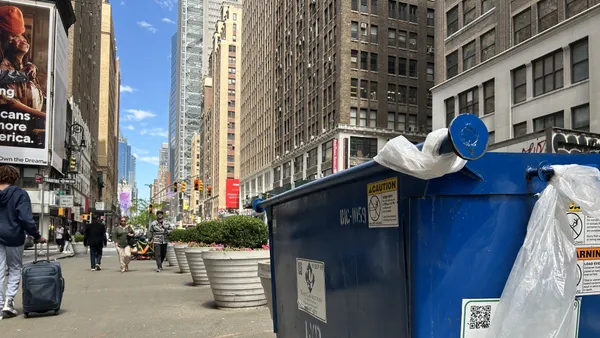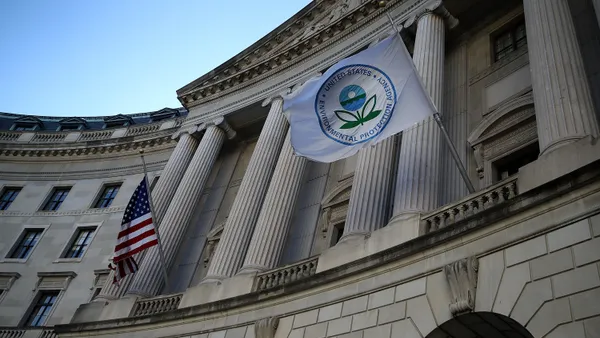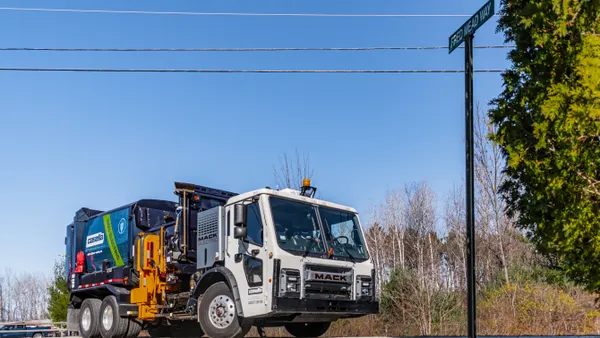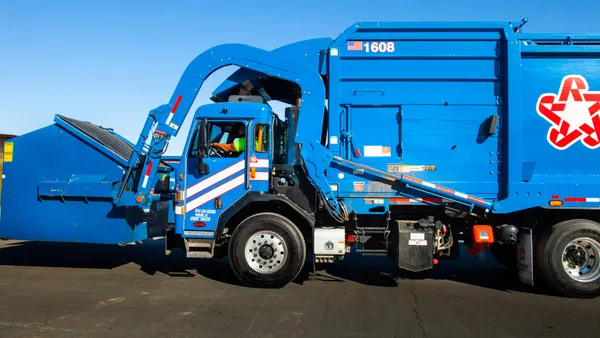- Economic picture: Stericycle President and CEO Cindy Miller said the company had anticipated that this quarter’s financial results would be lower year over year. Numerous factors such as labor challenges, supply chain disruptions and accelerating inflation impacted revenues. There was also a decline in COVID-19-related medical waste, as well as “unfavorable” foreign exchange rates, she said.
- Pricing: Chief Financial Officer Janet Zelenka said the company is maintaining its guidance for the year, expecting organic revenue growth of 3% to 5% on a base of $2.6 billion, with about $120 million to $140 million in capital expenditures. Given the slow start to the year, Stericycle plans to meet the revenue targets in part with about $25 million of pricing from surcharges and fees.
- Labor challenges: Employee absences due to the omicron variant of the coronavirus were “the most impactful COVID disruption that we've had since the beginning of the pandemic,” Miller said. Sick days contributed partly to Stericycle’s 21% shortfall in driver staffing in North America at the beginning of the quarter, she said. By March, more drivers were back at work, and the company recruited additional drivers, reducing the shortfall to 12%. Stericycle’s labor costs this quarter increased due to higher overtime pay, as well wage increases for new and existing employees and costs for new team member onboarding, Zelenka said.
- Anti-corruption settlement: Stericycle recently announced it reached agreements with the U.S. Securities and Exchange Commission, the U.S. Department of Justice and Brazilian authorities to resolve a legacy corruption investigation that began in 2017 in its Latin America operations. The settlement will come from money the company accrued in the third and fourth quarters of 2021. Miller called the settlement an “important milestone” and added that the company in the years since had instituted “new policies, procedures and internal controls.”
- Facility news: Stericycle touted the anticipated second-quarter opening of a new medical waste facility in New Jersey. Miller said the facility is “strategically located” to reduce fuel consumption and vehicle miles driven in the New York metro area and will include new closed-loop systems for recycling steam into heat energy and minimizing overall emissions.
- Container standardization: Miller also highlighted the company’s new SafeShield antimicrobial medical waste containers for storing and transporting medical waste, which she said would reduce container options from 150 types to about 20 types. The containers are meant to be more sustainable than the company’s other containers and contain 15% recycled content. Stericycle will work with plastics recyclers to pelletize old containers and sell them as recycled raw material.

Stericycle reports challenging Q1, detailing recovery from labor and inflation headwinds
The company saw a decline in pandemic-related waste, but also experienced an acute period of driver illnesses. It also previewed a new medical waste facility and closed out a corruption case.

Recommended Reading
- WM, Republic Services and Stericycle facing shareholder proposals on civil rights, environmental justice By Megan Quinn • Updated June 2, 2022
- Q1 earnings results for major waste and recycling companies By The Waste Dive Team • Updated May 6, 2022








